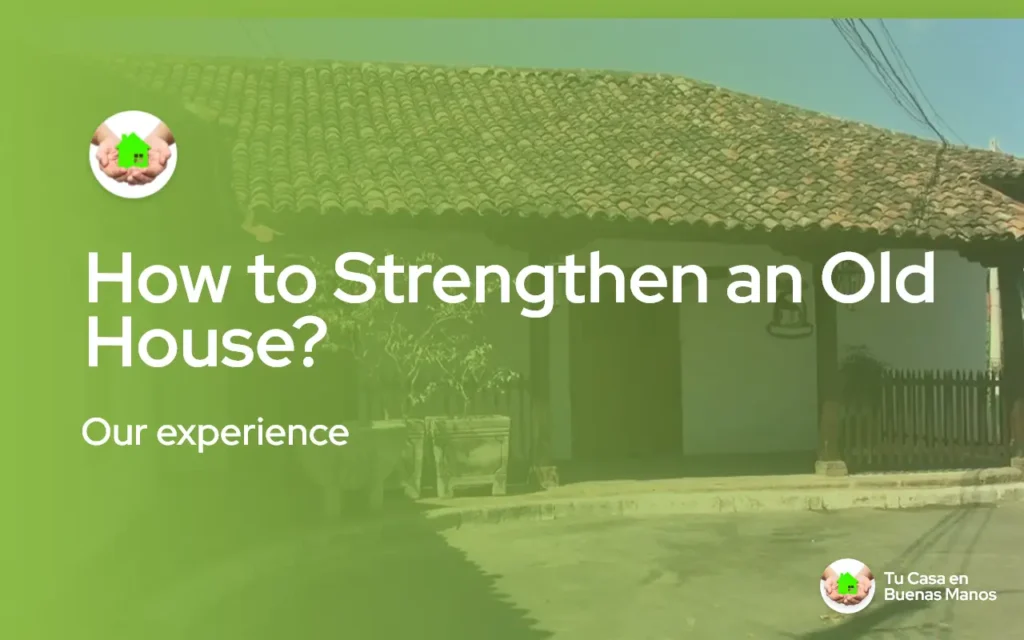Strengthening an old house is more than just a renovation project—it’s about safety, stability, and heritage preservation. Over the years, homes built decades ago may face foundation problems, wall deterioration, roof damage, or moisture issues. Reinforcing them allows these homes to remain safe, durable, and full of charm for many more generations.
Structural Evaluation: The First Essential Step
Every old home should begin with a professional inspection. A structural engineer or architect can detect:
- Cracks in walls and foundations
- Moisture and rising damp
- Roof weaknesses or termite damage
- Structural imbalances from ground settling
This assessment guides the reinforcement plan.
Foundation Reinforcement
The foundation is the backbone of any house. If compromised, the entire structure is at risk.
| Technique | Description | Best Use |
|---|---|---|
| Underpinning | Adding concrete or pilings beneath the foundation | Uneven or sinking houses |
| Jacketing | Surrounding foundations with reinforced concrete | Weak brick or stone bases |
| Micro-piles | Deep steel or concrete rods | Soft soils or seismic areas |
Wall Reinforcement
Old walls made of brick, adobe, or stone often lose strength over time.
| Problem | Solution |
|---|---|
| Expanding cracks | Cement-based plaster or reinforcement mesh |
| Weak load-bearing walls | Reinforced concrete or steel beams |
| Adobe deterioration | Replace with stabilized adobe blocks |
Roof Upgrades
Wooden beams and clay tiles are beautiful but vulnerable to rot, termites, and leaks.
- Replace damaged beams with treated wood or steel
- Keep original tiles but apply waterproof coatings
- Use lighter, stronger modern materials when necessary
Seismic Reinforcement
In earthquake-prone regions, extra stability is crucial.
| Reinforcement | Benefit |
|---|---|
| Anchoring walls to roof and foundation | Prevents wall separation |
| Steel braces or frames | Increases flexibility and resistance |
| Corner joint strengthening | Protects weak structural points |
Moisture Protection
Humidity is a silent destroyer of old houses, damaging both walls and foundations.
| Source | Solution |
|---|---|
| Poor external drainage | Improve rain channels and ground slope |
| Roof leaks | Replace tiles and add waterproofing |
| Rising damp | Install waterproof barriers, fix leaking pipes |
Updating Installations
While not part of the structure, electrical and plumbing systems are essential. Old wiring may cause fires, and outdated pipes can leak, weakening the foundation. Modern systems improve both safety and comfort.
Preserving Historical Style
Reinforcement does not mean sacrificing charm. With modern methods hidden beneath traditional finishes, you can preserve the architectural identity of the house while making it stronger than ever.
FAQs About Strengthening an Old House
What is the best way to strengthen an old house foundation?
The most effective methods are underpinning, jacketing, or micro-piles, depending on the soil and foundation condition.
Can an old house be made earthquake-resistant?
Yes. By anchoring walls, adding steel braces, and reinforcing joints, old homes can withstand seismic movements much better.
How do you fix moisture problems in old houses?
Solutions include improving drainage, waterproofing walls and roofs, and repairing leaking pipes.
Is it possible to keep the original style while reinforcing?
Absolutely. Many homeowners choose modern reinforcements while maintaining traditional finishes, ensuring both safety and historic charm.
How much does it cost to reinforce an old house?
Costs vary depending on foundation condition, reinforcement techniques, and size of the home. However, reinforcing is almost always cheaper than a full rebuild.
- Ready-to-Rent on the coast: how to renovate to rent better with less maintenance - October 20, 2025
- What renovation increases resale value the most in apartments near the coa - October 19, 2025
- How much does it cost to renovate a luxury bathroom? - September 16, 2025




